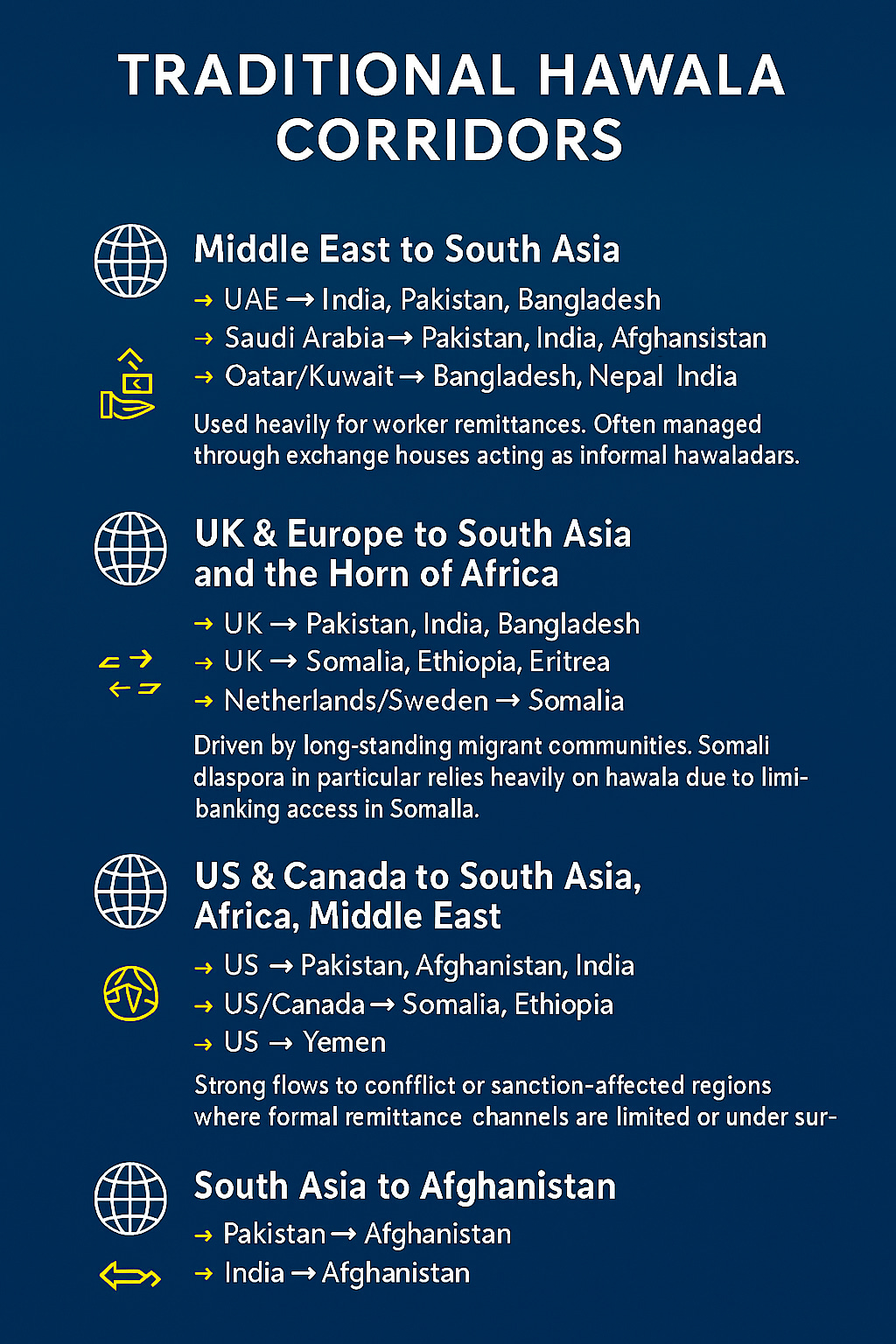Issue #16 – Risks Exposed – Cash Couriers & Hawala Hubs
Polar Insider | Issue #16 | Week of 18 June 2025
🧊 Introduction
Hi there,
Welcome to this week’s Polar Insider. Even as digital threats dominate headlines, cash remains a fundamental variable in financial crime. For financial crime professionals, understanding the nuanced roles of cash couriers and hawala networks in global money laundering is crucial. These mechanisms, while centuries old, remain key enablers of large-scale illicit finance.
In this issue, we break down:
📌 Top Story – Risks Exposed – Cash Couriers & Hawala Hubs
🔎 Case Study – Europol Busts €180M Hawala Network in Spain (2024–25)
🌍 Regulatory Roundup – Cross-Border Compliance Insights
🧰 Compliance Toolkit – Practical Resources & Red Flags
📌 Top Story
Uncovering the Risks in Cash Movement Channels
Despite advances in financial monitoring, physical cash illicitly flows through global networks daily. Whether smuggled across borders via vehicles, managed by couriers, or hidden within the framework of hawala systems, the methods are resilient, efficient, and difficult to intercept.
Key Channels for Illicit Cash Movement
Bulk Cash Smuggling
Hidden in cargo or luggage, cash is moved via air, land, or sea with obscured documentation or below reporting thresholds.Hawala Settlements
Hawaladars balance internal ledgers, bypassing formal financial systems entirely, making it ideal for laundering and tax evasion.Abuse of Legitimate Remittance Services
Transactions disguised as personal remittances exploit MSBs (Money Service Businesses) through false IDs or structuring practices.Front Companies as Cash Hubs
Businesses like convenience stores or freight services become laundering “drop” locations, facilitating cash movement to brokers.Fragmented Cash Transfers via Couriers
Numerous couriers move smaller sums through multiple jurisdictions, layering transactions to avoid detection.
Institutional Exposure Risks
💸 Banking System Vulnerabilities: Illicit cash enters via deposits or remittance accounts, often in high-risk SMEs or cash-intensive businesses.
🚩 Lack of Transparency: Hawala’s opaque mechanisms disrupt tracking, leaving financial institutions exposed to unexplained inflows.
🌍 Jurisdictional Blind Spots: Regulatory inconsistencies across borders allow networks to exploit weaker regions or systems.
Mitigation Strategies for Compliance Teams
Deploy Geolocation Monitoring
Flag anomalies in cash deposits occurring near high-risk border zones or traditional hawala corridors that deviate from expected customer behaviour.
Screen Accounts for Informal Activity
Investigate personal or business accounts handling frequent, unexplained small transfers from overseas sources.Strengthen Partnerships with Authorities
Establish inter-agency cooperation with customs and border authorities to gain real-time intelligence on cash seizures.Invest in Targeted Training
Equip staff with detailed hawala typology training to identify suspicious repetitive payment patterns.Audit SMEs for Beneficial Ownership Risks
Review ownership structures of businesses with high cash flows or patterns consistent with hawala operations.
🔎 Case Study
Europol Dismantles a €180M Hawala Network
Overview
In February 2025, Europol successfully dismantled a sophisticated hawala operation based in Spain. The network facilitated illicit cash flows exceeding €180 million, moving funds seamlessly across Europe, Middle East and North Africa (MENA), and South Asia.
What Happened
20+ arrests in Barcelona, Madrid, and Valencia.
€2.5 million in cash seized during raids.
Operations linked to drug trafficking and counterfeit goods smuggling.
Shell companies leveraged as collection sites.
Key Takeaways for Financial Crime Units
🚨 Watch for unusual drop locations like retail or logistics hubs connected to courier networks.
🧱 Advocate for cross-jurisdictional data sharing to identify overseas facilitator roles earlier.
💼 Strengthen due diligence on companies with high deposits but minimal legitimate activity.
🌍 Regulatory Roundup
🇪🇺 European Union: Enhanced due diligence for cross-border cash deposits over €3,000 now required under AMLA guidelines.
🇺🇸 United States: CBP and FinCEN revisions to “Form 105” include biometric data to profile repeat courier offenders.
🇦🇺 Australia: AUSTRAC reiterates mandatory reporting for international cash transactions exceeding A$10,000, with additional scrutiny on third-party couriers.
🧰 Compliance Toolkit
🛡 The Role of Hawala and Other Similar Service Providers in Money Laundering and Terrorist Financing – Visual reference of hawala typologies in use
📎 Download → FATF Report on Hawala and Similar Service Providers
🚛 Cross-Border Courier Red Flag List (FinCEN) – Contains red flags and typologies relevant to hawala and courier-based laundering schemes.
📎 Download → FinCEN Advisory FIN-2010-A001
💬 Quote of the Week
"Informal value transfer isn’t an oversight; it’s a mirror reflecting gaps in formal financial oversight."
– Tom Keatinge, Director, Financial Crime Studies
🎁 Bonus for Subscribers
Don’t forget to download your copy of the 2025 Financial Crime Regulatory Tracker (USA, UK, AU).
Stay on top of AML requirements and enforcement trends globally.
👉


